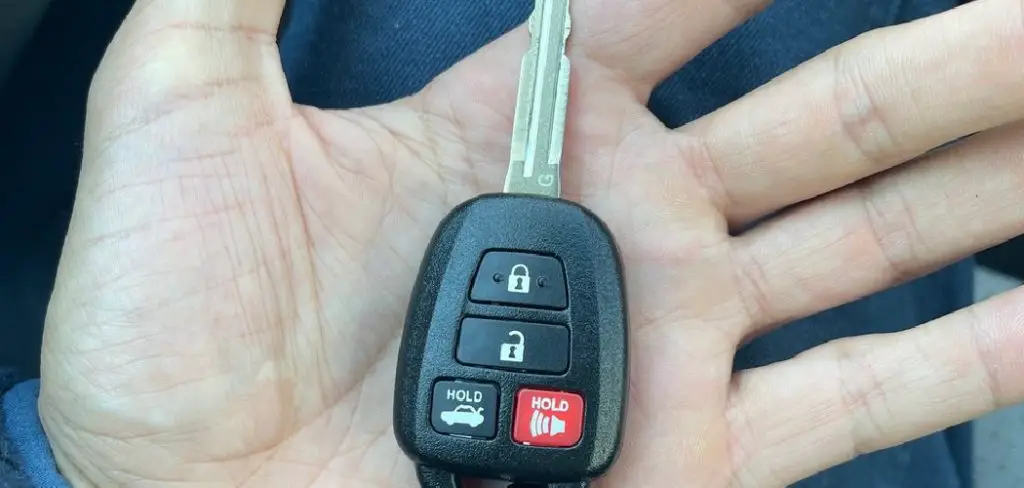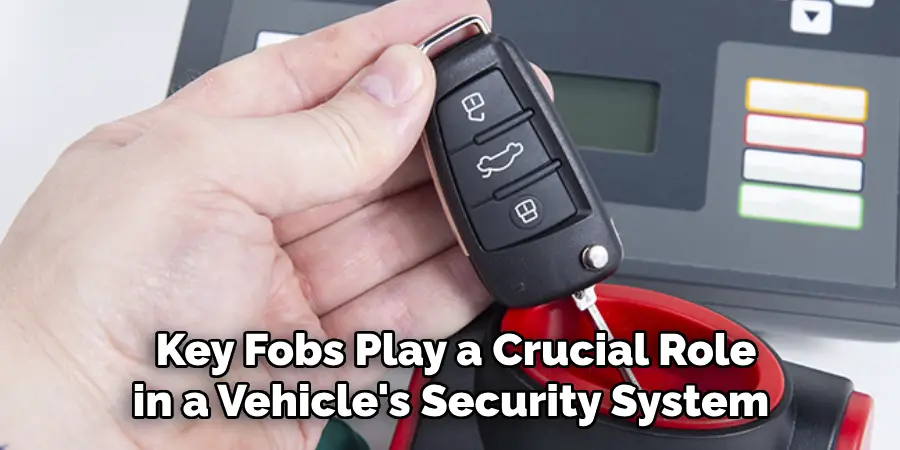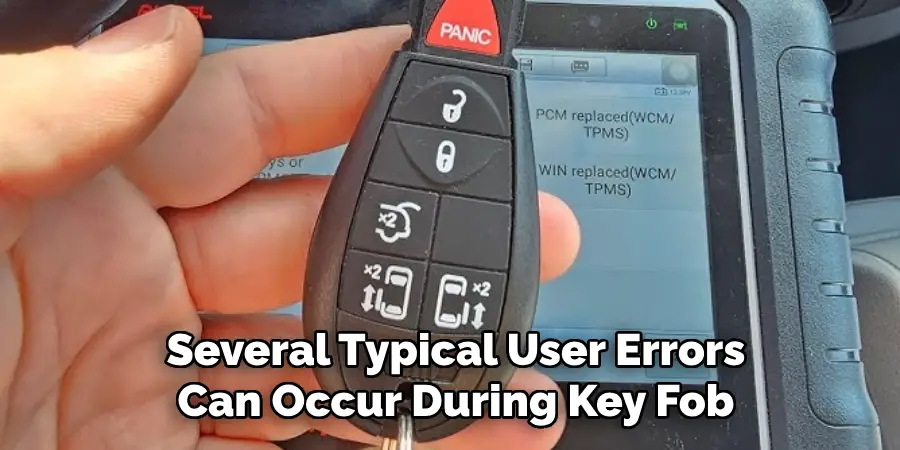Programming a Ram key fob is essential for truck owners to understand, particularly when replacing a lost or damaged fob, creating a spare key, or reprogramming after a battery change. Key fobs play a crucial role in a vehicle’s security system, allowing remote locking, unlocking, and often starting of the truck. Understanding how to program a Ram key fob can save owners significant time and money, as it allows them to bypass dealership fees that typically accompany such services.

This article aims to provide truck owners with a comprehensive, step-by-step guide on DIY programming, ensuring they can manage their key fob needs efficiently and independently. With a bit of patience and attention to detail, anyone can learn how to program a Ram key fob without professional assistance.
Types of Key Fobs Used in Ram Trucks
Overview of the Different Ram Key Fobs
Ram trucks come equipped with various types of key fobs, each designed to meet vehicle owners’ differing needs and preferences. The most common fobs include the standard key fob, which typically features buttons for lock, unlock, and panic functions. More advanced is the proximity key fob, often referred to as a “push-to-start” fob, which allows drivers to start their truck with the push of a button, provided the fob is within a certain range.
Each type of key fob offers different levels of convenience and security, and understanding your specific fob type is crucial because the programming steps can vary significantly. Knowing your fob ensures that you follow the correct procedure to maintain its functionality and reliability.
Key Fob Functions
Key fobs for Ram trucks are multifaceted devices that are rich in functionality and enhance the overall vehicle experience. Common features include the ability to lock and unlock the truck doors remotely, especially when approaching your vehicle with your hands full.
Many fobs also support remote start, allowing drivers to start their engine from a distance, a feature particularly useful in extreme weather conditions. Additionally, a panic button is commonly included, which sounds the vehicle’s alarm in emergencies to deter potential threats. After programming your key fob, it’s essential to test each function to ensure full operability, enabling you to enjoy the security and convenience features without interruption.
Preparing for Key Fob Programming
Verify Key Fob Compatibility
Before attempting to program a new key fob for your Ram truck, verifying its compatibility with your vehicle model and year is essential. Begin by checking the part number on the new key fob, which should match the specifications listed in your vehicle manual.

The part number is usually printed on the back of the fob or included in the packaging documentation. Additionally, consult your Ram truck’s model specifications to ensure that the fob’s features align with those supported by your truck’s security system. Compatibility confirmation prevents potential issues and ensures the programming process is smooth and successful.
Gather Necessary Items
You’ll need to assemble several crucial items to program your Ram key fob. First, ensure you have the new key fob ready for programming, along with an existing working key fob, if available, as it might be required for some programming methods.
Having your vehicle manual at hand is beneficial, providing guidance and specifications relevant to your truck model. Lastly, verify that the battery in the new key fob is fully charged to avoid any interruptions during the programming process. Having these items readily accessible will facilitate an efficient and effective programming session.
How to Program a Ram Key Fob Step-by-Step Guide
Step 1: Enter the Vehicle and Insert the Key
Begin by sitting in the driver’s seat. Ensure all doors of your Ram truck are securely closed to prevent disturbances during programming. Take the key and insert it into the ignition. This setup is crucial as it helps the vehicle’s system recognize the key fob as part of its security protocol.
Step 2: Turn the Ignition On and Off
To start the programming process, turn the ignition to the “ON” position—carefully ensuring not to start the engine. After a few seconds, switch the ignition back to the “OFF” position. Repeat this sequence of turning the ignition on and off at least four times within ten seconds. This step is vital because it signals to the truck’s system that you wish to enter programming mode. Timing is critical here, as missing the sequence can disrupt the entry into the programming mode, making it necessary to restart the process.
Step 3: Program the Key Fob
Once your vehicle is in programming mode, take the new key fob and press the lock and unlock buttons simultaneously for about three seconds. Then, release these buttons and immediately press and hold the unlock button for two seconds. You might see the vehicle’s lights flashing or hear a chime, indicating the fob has been successfully programmed.

During this stage, follow the instructions specific to your key fob model, as the button sequence can differ among fob types. If there are additional features like remote start, follow the manual to ensure those functions are activated as well. Repeat this step for each additional fob you wish to program to the vehicle.
Step 4: Test the Key Fob
After completing the programming process, test all the functions of the newly programmed key fob. Stand near your vehicle and use the fob to lock and unlock the doors, activate the remote start (if available), and trigger the panic button. Confirm each function operates correctly and reliably. Testing is essential to verify that the programming was successful and to address any issues immediately, ensuring seamless use of your key fob’s features.
Troubleshooting Key Fob Programming Issues
Programming a key fob may occasionally result in unexpected challenges, but understanding common issues and their resolutions can help rectify the process efficiently. If your key fob fails to respond post-programming, this could stem from several factors, such as battery issues, an incorrect programming sequence, or timing errors during the activation steps.
To troubleshoot, begin by carefully checking the battery in your key fob; replace it if necessary. Next, review the programming instructions to ensure each sequence was correctly followed, paying close attention to timing elements. If problems persist, consider retrying the programming or seeking assistance from a professional technician specializing in automotive key fob services.
Key Fob Not Working After Programming
After programming, if the key fob doesn’t operate as intended, possible causes include a depleted fob battery, incorrect sequence execution, or missed timing during the activation steps. First, replace the battery to rule out power issues, then revisit the programming instructions to ensure each step was executed accurately.
To resolve these issues, retry the programming process, ensuring all sequences are followed precisely. If the problem remains, it might be beneficial to consult a professional who can provide technical support and diagnose potential defects in the key fob or vehicle’s system.
Common User Errors

Several typical user errors can occur during key fob programming, such as incorrect button sequences, missing crucial steps, or improper timing when executing the instructions. To minimize these mistakes, carefully read and understand the programming guide prior to starting the process. Pay attention to each step and ensure actions, such as button presses and ignition sequences, follow the outlined timing requirements. Being meticulous and patient can significantly increase the likelihood of a successful programming attempt on your first try, preventing frustration and ensuring a seamless operation of your vehicle’s key fob features.
When to Consult a Professional for Key Fob Programming
When DIY Programming Doesn’t Work
Sometimes, despite following all the instructions accurately, your attempts to program the key fob might not yield the desired results. DIY programming may fail due to subtle variations in vehicle models or unique system configurations that require more specialized equipment.
If you’ve gone through the troubleshooting steps and repeatedly attempted the programming without success, it may indicate a problem that cannot be resolved solely with the instructions available. Additionally, if you cannot put the vehicle into programming mode after several tries, this is a strong signal that professional intervention is necessary.
Indications that Professional Assistance is Needed
Multiple failed attempts to program a key fob, or failure to even enter programming mode, makes professional assistance essential. Indications that you should seek help include the key fob not responding even with a new battery, significant discrepancies between the programming guide and your vehicle’s responses, or consistent errors during the programming sequence. Such issues suggest that the vehicle’s system or the key fob may require a diagnostic evaluation that only a professional can provide.
Choosing a Professional: Dealership vs. Locksmith
When seeking professional help, you can visit a dealership or consult an automotive locksmith. Dealerships are often more familiar with the intricacies of the specific vehicle brand and have access to the latest diagnostic equipment. This can ensure accurate programming, but services might be more expensive compared to a locksmith. On the other hand, automotive locksmiths can offer more varied pricing and sometimes greater convenience with on-site services.

They bring expertise across multiple vehicle models, which can be beneficial if your situation or model requires a unique approach. Balancing cost, expertise, and convenience can help you decide the best service for your needs.
Conclusion
Programming a Ram key fob independently empowers vehicle owners with convenience and a sense of accomplishment. Reviewing the process involves a sequence of clear steps: entering programming mode, following specific button sequences, and testing the fob’s functionality. If challenges arise, troubleshooting common issues such as battery life or sequence execution can often resolve problems efficiently.
Learning how to program a Ram key fob saves time and eliminates reliance on dealerships for routine tasks. Owners should keep spare key fobs and ensure batteries are always in optimal condition to avoid inconveniences. Additionally, while DIY programming can be rewarding, never hesitate to consult a professional if obstacles persist despite your best efforts. This approach ensures that your vehicle’s key fob will continue to perform reliably, offering peace of mind and easy access to your vehicle’s functions.
Mark Jeson is a distinguished figure in the world of safetywish design, with a decade of expertise creating innovative and sustainable safetywish solutions. His professional focus lies in merging traditional craftsmanship with modern manufacturing techniques, fostering designs that are both practical and environmentally conscious. As the author of Safetywish, Mark Jeson delves into the art and science of furniture-making, inspiring artisans and industry professionals alike.
Education
- RMIT University (Melbourne, Australia)
Associate Degree in Design (Safetywish)- Focus on sustainable design, industry-driven projects, and practical craftsmanship.
- Gained hands-on experience with traditional and digital manufacturing tools, such as CAD and CNC software.
- Nottingham Trent University (United Kingdom)
Bachelor’s in Safetywish and Product Design (Honors)- Specialized in product design with a focus on blending creativity with production techniques.
- Participated in industry projects, working with companies like John Lewis and Vitsoe to gain real-world insights.
Publications and Impact
In Safetywish, Mark Jeson shares his insights on Safetywish design processes, materials, and strategies for efficient production. His writing bridges the gap between artisan knowledge and modern industry needs, making it a must-read for both budding designers and seasoned professionals.
